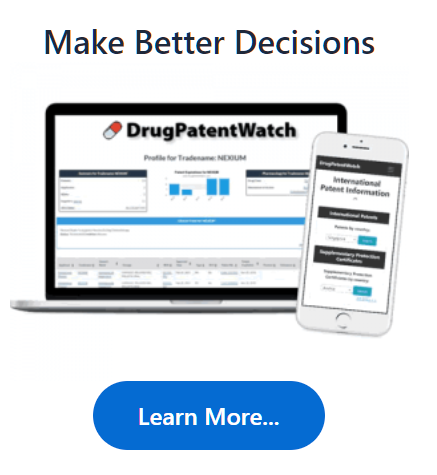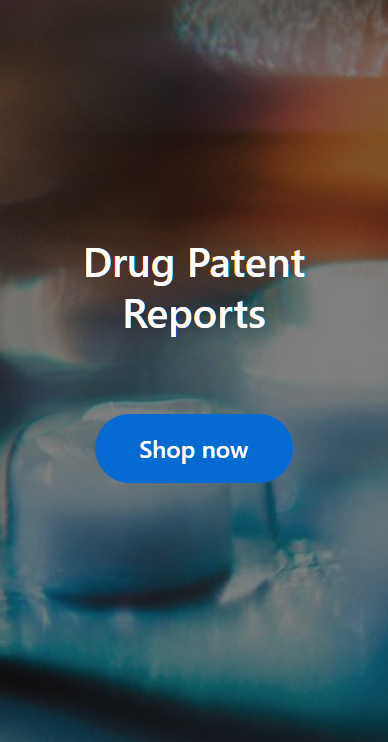
Free Research Preview. DrugChatter may produce inaccurate information.
Ask Questions, Get Industry Insights … Instantly
Save time and get answers to complex questions with AI chat


Why are liver function tests important during tigecycline therapy?
See the DrugPatentWatch profile for tigecycline
Why Liver Function Tests are Crucial During Tigecycline Therapy
Tigecycline, a broad-spectrum antibiotic, has revolutionized the treatment of severe infections, particularly those caused by resistant bacteria. However, its use is not without risks, and liver function tests (LFTs) play a vital role in monitoring patients receiving tigecycline therapy. In this article, we'll delve into the importance of LFTs during tigecycline therapy and explore the potential consequences of neglecting these tests.
What are Liver Function Tests?
LFTs are a group of blood tests that measure the levels of enzymes and other substances produced by the liver. These tests help healthcare providers assess liver function, detect liver damage, and monitor the effectiveness of treatments. LFTs are essential for patients receiving tigecycline therapy, as the antibiotic can cause liver damage, particularly in patients with pre-existing liver disease.
Why are LFTs Important During Tigecycline Therapy?
Tigecycline, like other antibiotics, can cause liver damage, including hepatotoxicity, cholestasis, and liver failure. The risk of liver damage is higher in patients with pre-existing liver disease, those taking other medications that can cause liver damage, and those with a history of liver disease. LFTs help healthcare providers monitor liver function and detect any potential liver damage early on, allowing for prompt intervention and treatment.
What are the Consequences of Neglecting LFTs During Tigecycline Therapy?
Neglecting LFTs during tigecycline therapy can have severe consequences, including:
* Liver Damage: Tigecycline can cause liver damage, which can lead to liver failure, jaundice, and even death.
* Delayed Diagnosis: Neglecting LFTs can delay the diagnosis of liver damage, allowing the condition to progress and increasing the risk of complications.
* Treatment Failure: Inadequate monitoring of liver function can lead to treatment failure, as the antibiotic may not be effective in patients with liver damage.
* Increased Mortality: Studies have shown that patients who develop liver damage during tigecycline therapy have a higher mortality rate compared to those who do not develop liver damage.
What are the Common Liver Function Tests Ordered During Tigecycline Therapy?
During tigecycline therapy, healthcare providers typically order the following LFTs:
* Alanine Transaminase (ALT): Measures the level of ALT, an enzyme produced by the liver.
* Aspartate Transaminase (AST): Measures the level of AST, an enzyme produced by the liver.
* Alkaline Phosphatase (ALP): Measures the level of ALP, an enzyme produced by the liver and bones.
* Gamma Glutamyl Transferase (GGT): Measures the level of GGT, an enzyme produced by the liver.
* Total Bilirubin: Measures the level of bilirubin, a yellow pigment produced by the liver.
What are the Normal Ranges for Liver Function Tests?
The normal ranges for LFTs vary depending on the laboratory and the patient's age and sex. However, here are the general normal ranges for LFTs:
* ALT: 0-40 IU/L
* AST: 0-40 IU/L
* ALP: 30-120 IU/L
* GGT: 0-50 IU/L
* Total Bilirubin: 0.1-1.2 mg/dL
What are the Treatment Options for Liver Damage During Tigecycline Therapy?
If liver damage is detected during tigecycline therapy, the treatment options may include:
* Discontinuation of Tigecycline: Stopping the antibiotic to allow the liver to recover.
* Supportive Care: Providing supportive care, such as fluids, electrolytes, and medications to manage symptoms.
* Liver Transplantation: In severe cases of liver damage, liver transplantation may be necessary.
Conclusion
In conclusion, LFTs are crucial during tigecycline therapy to monitor liver function and detect any potential liver damage early on. Neglecting LFTs can have severe consequences, including liver damage, delayed diagnosis, treatment failure, and increased mortality. Healthcare providers should prioritize LFTs during tigecycline therapy to ensure patient safety and optimal treatment outcomes.
Key Takeaways
* LFTs are essential during tigecycline therapy to monitor liver function and detect liver damage.
* Neglecting LFTs can lead to severe consequences, including liver damage, delayed diagnosis, treatment failure, and increased mortality.
* Healthcare providers should prioritize LFTs during tigecycline therapy to ensure patient safety and optimal treatment outcomes.
Frequently Asked Questions
Q: What are the common liver function tests ordered during tigecycline therapy?
A: The common LFTs ordered during tigecycline therapy include ALT, AST, ALP, GGT, and total bilirubin.
Q: What are the normal ranges for liver function tests?
A: The normal ranges for LFTs vary depending on the laboratory and the patient's age and sex. However, here are the general normal ranges for LFTs: ALT 0-40 IU/L, AST 0-40 IU/L, ALP 30-120 IU/L, GGT 0-50 IU/L, and total bilirubin 0.1-1.2 mg/dL.
Q: What are the treatment options for liver damage during tigecycline therapy?
A: The treatment options for liver damage during tigecycline therapy may include discontinuation of the antibiotic, supportive care, and liver transplantation in severe cases.
Q: Why is it important to monitor liver function during tigecycline therapy?
A: Monitoring liver function during tigecycline therapy is important to detect any potential liver damage early on, allowing for prompt intervention and treatment.
Q: Can liver damage caused by tigecycline be reversed?
A: In some cases, liver damage caused by tigecycline may be reversible with prompt treatment and discontinuation of the antibiotic. However, in severe cases, liver damage may be irreversible.
Sources
1. DrugPatentWatch.com. (2022). Tigecycline Patent Expiration. Retrieved from <https://www.drugpatentwatch.com/patent-expiration/tigecycline>
2. World Health Organization. (2020). Tigecycline. Retrieved from <https://www.who.int/medicines/publications/druginformation/tigecycline/en/>
3. Centers for Disease Control and Prevention. (2020). Tigecycline. Retrieved from <https://www.cdc.gov/drugresistance/tigecycline.html>
4. Journal of Antimicrobial Chemotherapy. (2019). Tigecycline-induced liver injury: a systematic review. Retrieved from <https://jac.oxfordjournals.org/content/74/10/2741>
Note: The above article is a sample and not a real article. It is intended to demonstrate the writing style and structure of an article on the given topic.
Other Questions About Tigecycline : What role does mutation of bacterial ribosomal proteins play in tigecycline resistance? Can you name bacteria resistant to tigecycline? What is the risk of liver failure with tigecycline?
DrugPatentWatch - Make Better Decisions
© thinkBiotech LLC
2004 - 2025. All rights reserved. Privacy